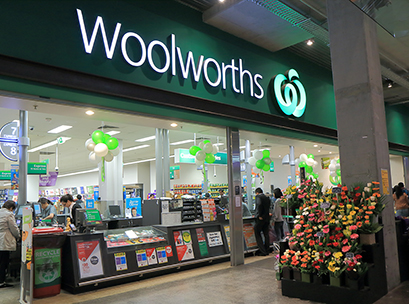 Woolworths plans to roll-out in-store grocery pick-up through all its Australian supermarkets by the end of September, with group CEO Brad Banducci revealing that the supermarket giant has an aspiration to implement drive-through and on-demand delivery within three years.
Woolworths plans to roll-out in-store grocery pick-up through all its Australian supermarkets by the end of September, with group CEO Brad Banducci revealing that the supermarket giant has an aspiration to implement drive-through and on-demand delivery within three years.
Speaking to investors after unveiling a 4.5 per cent increase in Australian food sales for the year ended 30 June yesterday, Banducci said Woolies is “working very hard” to meet the needs of increasingly connected customers by expanding their options for buying groceries.
He said that an additional 200 stores will have in-store pickup enabled by the end of this week and that once the appropriate foundations were in place a myriad of other services would be implemented.
“What we really want to do is provide our customer with a multitude of options in how they shop with us, whether its in-store, pick-up at store, pick-up at the front of store, pick-up via drive-through or home delivery – at a designated time or express within one hour,” he said.
“We have an aspiration to activate every one of those opportunities…for food in the short-term and longer term with food, drinks and general merchandise,” Banducci continued.
The move is part of a broader omnichannel play from Woolworths designed to bolster its offer ahead of the prospective impact of Amazon into Australia and other pure-play ecommerce businesses, such as Catch Group’s Grocery Run.
“Everyone is asking questions about what our response to Amazon is, the truth is the best response to any competitor, including Amazon, is to focus on your customer and meet their needs,” Banducci explained.
“Our customer needs are changing, increasingly customers are becoming connected customers, they’re expecting us to stick together their different interactions with our business.”
Woolies launched ‘Woolworths X’ earlier this year and while still staying light on specifics, Banducci said that digital and loyalty assets would play a key role in upping the use of data analysis through the group.
“What we’ve done is put all of our talents together in one business in order to help us chart a pathway for the connected customer and that’s our digital assets as well as our loyalty assets.
“It’s very early days, but it’s a very important strategic priority, not only to compete against the pureplay e-commerce players, but actually everyone else in the market.
“In FY18 alone we’ll be doing much more machine based learning to figure out how we put the right range into the right store with the right number of facings and use predictive ordering based on the weather or the events in that environment to do that,” Banducci explained.
Turnaround to transition
With continued momentum buoying supermarket sales, which the company said are in line with performance across 2H17 in the first eight weeks of FY18 trading, Banducci said that internal thinking about the position in the group has changed versus a year ago.
He told analysts that after two years “fixing things” Woolworths was now increasingly looking at material improvement as its philosophy moving forward, excluding Big W, which is undertaking a largescale turnaround strategy.
Banducci said that moves like the $1 billion-dollar investment in price and service last year to align itself better with competitors, shouldn’t be repeated and that Woolies would instead take a more forensic approach to price investment moving forward.
“Sledge hammer investment” is hopefully in the past, said Banducci, who asserted Woolies is now “much more into a thoughtful process of trying to understand what each customer segment wants”.
Promotions declined between 7 and 8 per cent during the year, with more than 3,500 SKUs on its EDLP program now, making the program just as big as its 3,800 weekly promotions.
“What we’d like to do is get into running our own race on this, we’ve been very reactive, [so] we’d like to get into running a strategy that’s right for our business, and our brand, and our customers.”
Investment in cost-of-doing-business initiatives, such as automated picking, rostering software, electricity efficiency and better product flow through the supply chain are expected to be focuses for the supermarket business in FY18, with material earnings benefits to be primarily realised in FY19-20.
Increasing electricity prices are expected to have a material impact on CODB in FY18 though, with Banducci conceding that Woolies will likely be unable to fully offset soaring power prices.
Renewals progressed at a slightly slower rate than forecasted for the year, with 72 out of a total 80 accomplished, however an upgrade program – which involves addressing key issues in stores to meet minimum standards – was started and has proved popular, with 80 such investments taking place during FY17.
Woolworths is targeting circa 80 renewals for next year, at a cost of $4-5 million each, and at least 50 upgrades, which are generally less disruptive to trading. It will also trial its next generation format by the end of FY18.
Access exclusive analysis, locked news and reports with Inside Retail Weekly. Subscribe today and get our premium print publication delivered to your door every week.





